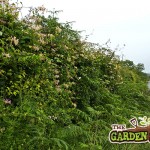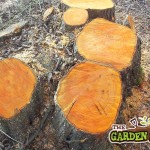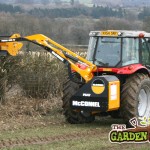Our native hedgerows are an important feature of our landscape and there are a number of steps in maintaining them that is important for their longevity & health
Depending on the shape, condition & species within native hegding each hedge should be treated differently;
- Native Hedgerow
- Coppicing
- Topping Hedgerows
Native Hedging which is wide or has a wide base: In this case trim the hedge at an angle, keeping the base of the hedge wide and allow the hedge taper in towards the top. This will ensure the maximum amount of light to the entire hedge and will prevent gaps or bare patches at the base of the hedge. Every 5m or so, allow a plant within the hedge develop into a tree or large shrub. Plants such as Ash, whitethorn or blackthorn can be left to develop into a specimen plant
Traditional or very native hedgerow: This will be a well-developed or very mature hedgerow with clearly developed tree growth. Here little maintenance work can be done, just control the growth of the tree’s canopy and reduce or remove any overhanging branches. The undergrowth can be kept short to allow for the development of scrub or grass species
Overgrown, dense & board hedgerows. These are the result of little or poor maintenance and are in need of extensive cutting back. The dense growth has been the result of regular but minimal cutting back or topping. Ideally an overgrown native hedgerow should be cut back hard or coppiced. Coppicing quite simply means, cutting all the plants within a hedgerow right down to ground level. You can coppice all plants or native hedging as they will all recover and regrow quickly. The best of our native hedging for coppicing includes willow, alder and hazel
Another aspect of the maintenance of native hedging is to consider the timing of bird nesting in our hedgerows. Native hedgerows are home to many different birds, mammals and insects and it is this that makes them such a valued assets in nature.
Under the wildlife act it is prohibited to cut back, coppice or prune native hedging between the 1st of March and the 31st of August each year. This is considered the nesting period and a time when hedging must not be disturbed


